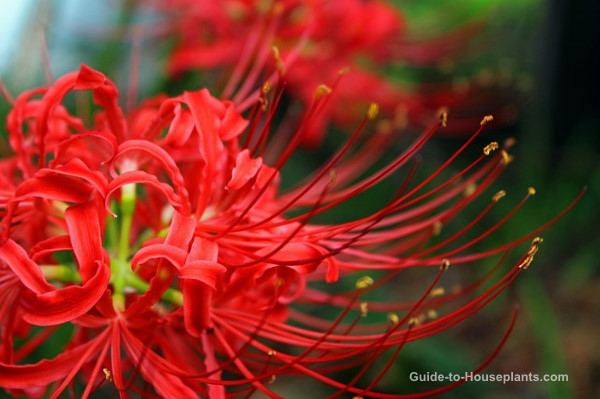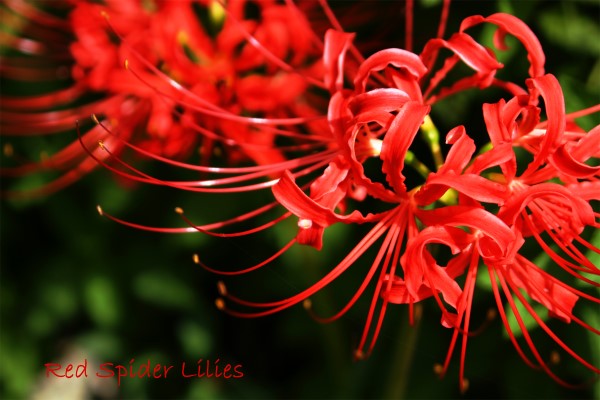Red Spider Lily
Botanical Name: Lycoris radiata
An elegant-looking plant, Red Spider Lily adds a sizzling burst of color to your home. Set your houseplant on a plant stand where you can admire its curly flowers. (Plus, you do want to show it off, don't you?)
This is a relative of the amaryllis and is also easy to grow indoors. Growing from a bulb, this exotic lily grows well in a pot on a sunny windowsill.

Get to Know Red Spider Lily
Just when most flowering plants are done for the season, red spider lily is ready to take their place, with fresh crimson blooms to brighten your home.
Flowers are about 2 - 2-1/2 inches (5-6 cm) across, made up of 6 wavy, bright-red, back-swept tepals. One rare cultivar is Lycoris radiata 'Alba' sporting white flowers.
You can expect clusters of blooms in late summer or fall on top of tall, leafless stems that grow 1-2 ft (30-60 cm) tall.
Strap-like leaves follow the flowers and will stay green through the winter. Allow the leaves to die back naturally before cutting them off. Don't pull them because it can damage the bulbs.
Pot up the bulbs as soon as they are purchased. These are warm-natured plants that don't need to be chilled. They'll bloom when they're ready. Don't over-pot. Like the amaryllis, Lycoris radiata likes to be in a small pot and blooms best this way.
This is a long-lived perennial and will provide years of beautiful flowers. This lily tends to bloom best after a hot, dry summer followed by a wet season...just like its native habitat. In fact, it gets another common name, Hurricane Lily, from the fact that it blooms during the stormy season in Asia.
Wondering whether to repot? This spider lily doesn't like to be disturbed, so divide bulbs only when it gets crowded in its pot. If you want to cover up a plain nursery pot, slip it into a cachepot -- a decorative pot without drainage holes. I put small stones in the bottom of the cachepot to keep the inner pot above the drainage water.

Red Spider Lily Care Tips
Origin: China
Height: Up to 24 in (60 cm)
Light: Bright light. Give the plant a quarter turn every few days to ensure all sides receive sunlight for even growth.
Water: Water thoroughly while plant is growing and blooming. Use a pot with a drainage hole and empty drainage tray because these bulbs may rot if kept wet. Gradually decrease water after blooming, maintaining barely moist soil in spring and summer.
Humidity: Relative humidity of 40-50%. It's a good idea to use a humidity gauge rather than guess. Humidity drops drastically in a closed-up house with the AC or furnace running. Discover ways to raise the humidity for your house plants.
Temperature: Average room (65-75°F/18-24°C)
Soil: Peat moss based potting mix
Fertilizer: Feed every 2 weeks spring to fall with a balanced water-soluble fertilizer.
Propagation: Division of bulbs. Like all bulbs in the lily family, these are poisonous, so keep them away from children, cats and dogs.


